iPhone 15 Pro Max Full Review
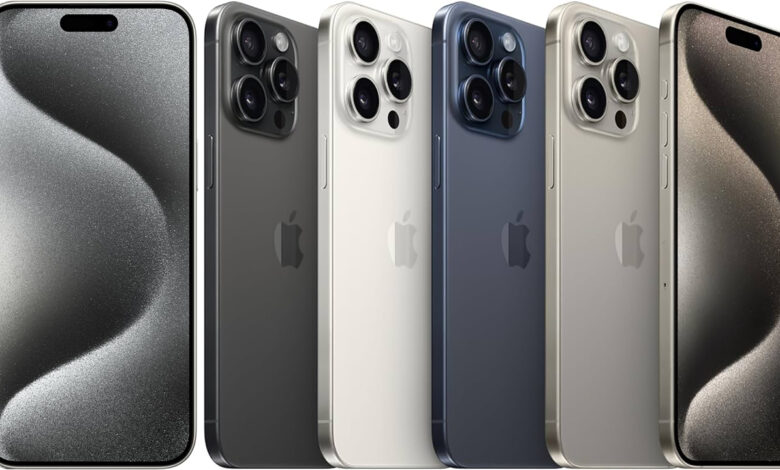
Introduction
Lot of people have been waiting for the iPhone 15 Pro Max besides bringing all of the good is that made last year’s Apple iPhone14 Pro Max so successful what has Apple improved on this time around and is it worth upgrading to I’m will for Mobileidn and let’s find out in our iPhone 15 Pro max review.
Design and build quality
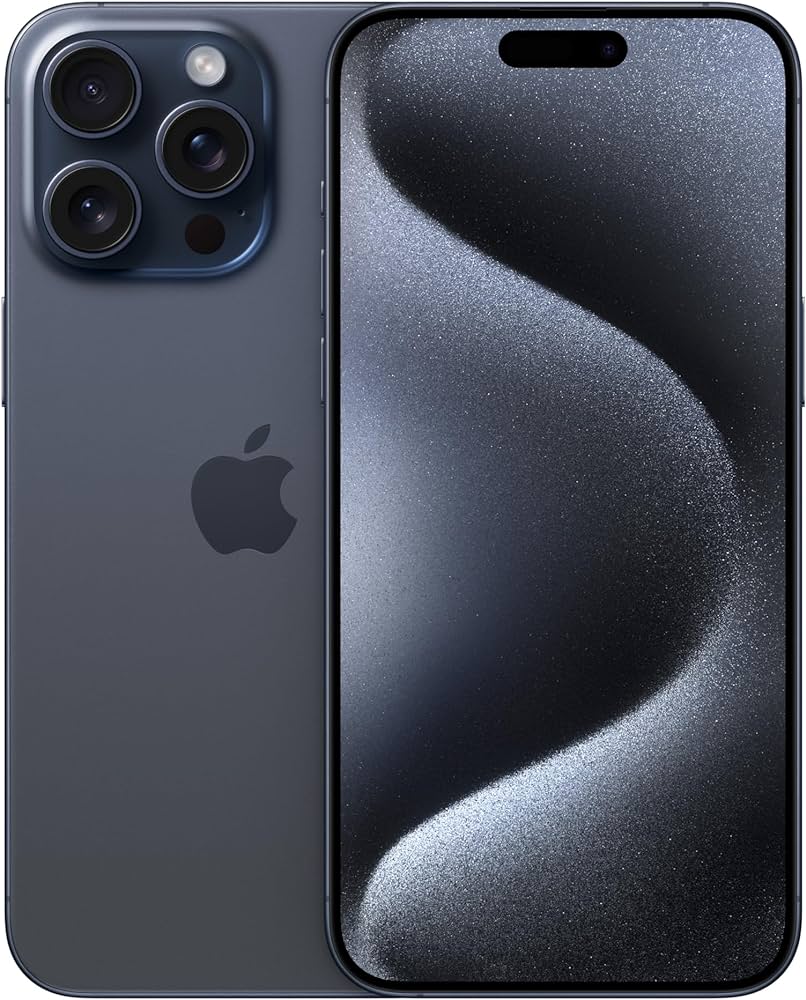
Apple pretty much delivers a consistent, high-quality product with each iPhone generation, but what makes this year’s Pro Max special? Well, there are actually some interesting changes compared to last year. For example, across the board, Apple has finally changed from a lightning port and cable to a USB-C.
The standard you find on pretty much all other mobile devices says goodbye to dongles and adapters unless you want to plug in headphones, but yeah, the phone also features a new programmable action key evolved from the silencer. Hardware button, of course, the iPhone 15 Pro Max packs a new, more powerful chipset, and its improved main camera and new five-times periscope telephoto zoom are very welcome changes.
Let’s start off by diving into the design with a flat back made of matte glass and a triple-circle camera. The looks are quite similar to before, but there are a couple of changes here compared to last year. First off, the iPhone 15 Pro Max is 20 grams lighter than the previous model, and you can feel it right away. Plus, you get rounded chamfers where the back meets the frame, which lends a more natural in-hand feel. But the biggest change is that the frame is made of titanium rather than stainless steel, so it’s both stronger and lighter.
However, while the new material is more premium, it doesn’t quite feel like it; it actually feels just like the aluminum you get on the cheaper iPhone 15 models, and we sort of miss the cold weightiness provided by a steel frame on top of that, even though you might imagine that a titanium build would be more durable based on drop and Ben tests online.
The iPhone 15 Pro Max’s back is actually a lot easier to break than the previous model. For whatever reason, at least you can still breathe easily around water. The iPhone 15 Pro Max again brings IP68-rated protection against dust and water submersion.
Display quality test
The display of the phone feels lifted straight from last year’s model, a 6.7-inch super-retinal XDR OLED with a 120 HZ refresh rate and protected by ceramic shield glass. The resolution comes out to a sharp 460 PPI, and you get great contrast as well as very accurate colors. There’s support for both HDR10 video and Dolby Vision, and something interesting is that the HDR playback is quite flexible.
The HDR can be applied only to the part of the screen that has the video playing. Just like last year, you get the pill-shaped screen cutout for the selfie cam and the 3D TF scanner for Face Unlock, and the cutout brings its Dynamic Island functionality as well, with a black bar extending beyond the cutout to display relevant info and let you easily call up certain apps from the background. This display’s max brightness is impressive.
We reached nearly 850 nits of maximum brightness with the manual slider, and this boosted to almost 1,800 nits in auto mode when presented with bright light promotion. This is what Apple calls its dynamic 120 HZ refresh rate, and it’s meant to provide silky smooth swiping and scrolling, then dial down all the way to 1 Hz when idling to save energy.
Speaker quality test
When it comes to the speakers, the iPhone 15 Pro Max brings what seems like the same system we saw in last year’s model. The stereo speakers have very good loudness and an impressively rich sound output across the board, from bass to vocals and treble.
Face ID & Storage options
Biometrics are handled through Apple’s Face ID, which is quite secure thanks to the TOF camera on the front; it’s as fast and reliable as ever, and the iPhone 15 Pro Max can come with 256 or 512 gigabytes of storage on board or a whole terabyte, and while that’s not expandable through MicroSD, you can connect an external drive through USB.
Latest iOS 17
The interface of the new iPhone generation is iOS 17. It brings the same experience as the previous version, with just a few new features sprinkled in, such as the lock screen, which houses your notifications and shortcuts for the flashlight and camera. It can also behave as an always-on display. Something new is the optional standby mode, which is always on display in landscape orientation and can activate while the phone is charging.
There is also plenty of support for widgets, and now you even get interactive widgets. You can tap on these and change things without even going into the app. There is also a new customizable call screen, which Apple calls contact posters for each contact you have. You have plenty of options for how they appear, including photos, emojis, and text. Some other new features in iOS 17 include password sharing with friends, offline maps, and live voicemail. Like I mentioned earlier, the silencer key has become the new action key, which triggers when you long-press it.
There are a few predefined actions available, as well as a shortcut button that allows you to assign pretty much whatever you want for your convenience. It could be a bit more convenient, though the location of the key is up high, where the silencer was not the easiest to reach on the fly, and I’ll briefly touch upon.
USB-C connectivity
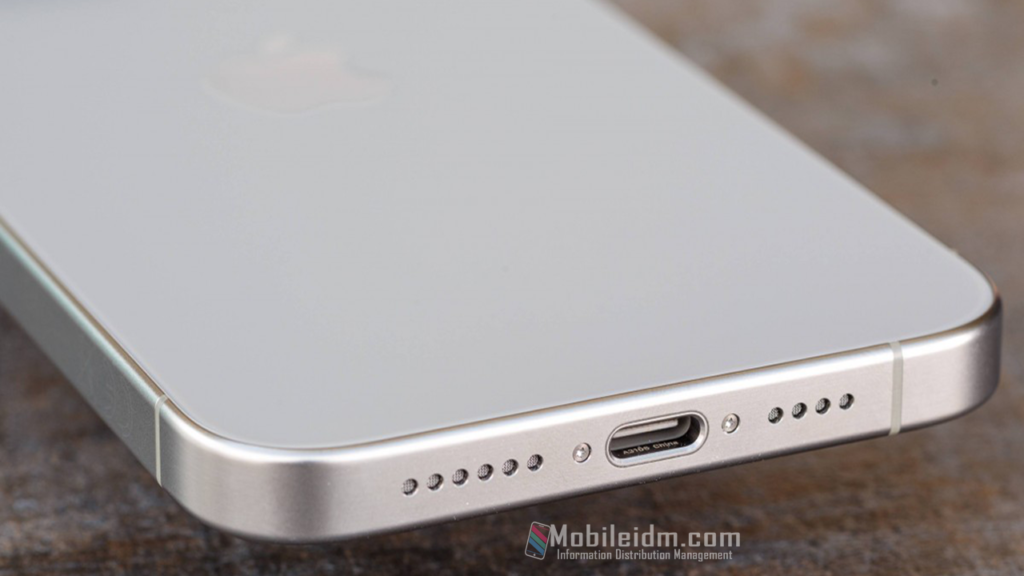
While the USBC connectivity of the phone itself supports USB 3, the cable that comes in the box actually only supports USB 2 speeds. There’s a type-C alt mode that allows you to output the phone screen to an external monitor. You can even output video in 4K at 60 FPS with a proper adapter since the aspect ratio matches the phone, though you’ll get letter boxing and black bars for most content, including YouTube.
However, some specific apps, like Netflix, can support full-screen output. There’s also support for USBC host mode, which allows you to connect things like a mouse or keyboard to the iPhone through the port and even record 4K video directly to external storage.
Apple A17 Pro
Now let’s talk about the chipset. In Apple’s A17 Pro, they’ve dropped the bionic label for this one. The chipsets and GPU feature Hardware accelerated rate tracing, which is supposedly four times faster than the software-based ray tracing of last year’s A6 bionic chip, we see this in graphics benchmarks. In a specific rate tracing test, the improvement is a massive 60%; otherwise, when it comes to overall CPU and GPU performance, the difference from last year is a modest 10% improvement.
Still, this makes the iPhone 15 Pro Max one of the most powerful smartphones out there, and Apple believes in its capabilities. lining up popular console-grade game titles for release on iOS, it’s not all about raw power, though sustained performance and thermal management are just as important.
Thermals
In our prolonged CPU stress test, the phone throttled gradually to 78%, which is decent; it could be better, though last year’s Pro Max maintained much higher Max performance in the same test. It seems that something about the software could be affecting it, though, because after updating iOS 17, the iPhone 14 Pro Max could only maintain 76% of its Max performance compared to 92% previously. But even despite all that, we didn’t encounter any drops or hiccups when gaming, and we never experienced the phone becoming unbearably hot, even after rigorous testing.
Battery life and charging speed test
The iPhone 15 Pro Max is powered by a 4,441 mAh battery, a minor increase over the 14 Pro Max’s 4,323. With it, the iPhone 15 Pro Max scored a great total endurance rating of 118 hours, almost the same as the 121 hours of last year’s model.
The iPhone doesn’t come with a charger in the box, but as expected, with an Apple 20 W power adapter, we were able to charge the Apple 15 Pro Max from 0 to 46% in half an hour. Nothing exciting, and about the same as last year, there’s also support for wireless charging and mag-safe support for those magnetized wireless chargers.
Main cameras
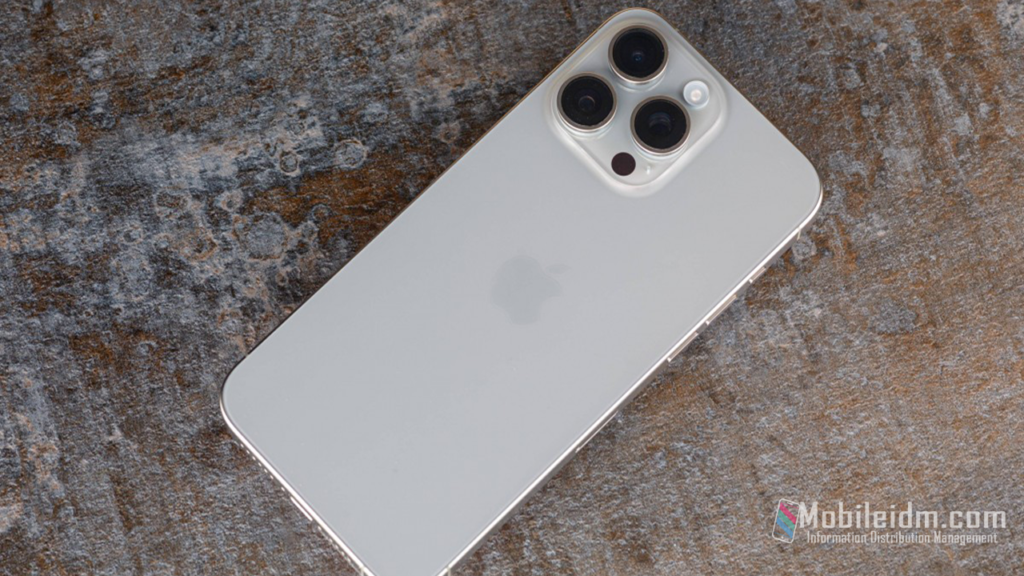
Now let’s get into the cameras. On the back are a 48-megapixel main camera, a 12-megapixel 5-times telephoto camera, a 12-megapixel ultra-wide camera, and a 3D TF laser scanner. The main camera has a bigger sensor this year, and it bends pixels to produce photos, but it actually outputs 24 megapixel photos by default.
Thanks to some computational improvements in contrast, most 48 megapixel smartphone cameras, including the one on last year’s model, bin pixels four into one and produce 12 megapixel photos during the day. The default photos from the main camera are quite good, with great contrast, no noise, and a wide enough dynamic range.
The rendition is typically Apple; the colors are natural-looking, perhaps even a bit boring, and there’s some extra sharpening in the fine details. When you look up close, you can also take 12 megap photos, and when you compare them, you can see that the 24 megap ones have more detail, particularly in stationary objects, so taking photos at 24 megapixels makes sense, especially since the file size isn’t that much bigger, up to about 1 and 1/2 MB extra per shot. Still, the phone will take a 12-megapixel photo when you’re capturing night mode.
Live photo portraits, macros, or flash photos The main camera also allows you to shoot at a 28 mm and 35 mm focal length, which is 1.2 and 1.5 times the zoom. The zoom is done by cropping from the large sensor, and you can even make either of these modes your default for the main camera. Then we get to two times zoom, which is solid. These photos always come out at 12 megapixels, and you get enough detail here. The other properties match the regular photos. Portraits come from the main camera and are taken at two times the zoom by default.
These have impressive subject separation. The sharpness and detail could be better, though in low-light scenes you’ll most often get Apple’s night mode processing kicking in automatically. You get brightened-up skies and shadows and high contrast overall. The only way to get 24-megapixel photos at night is to disable the night mode. These are more realistic-looking, with a cooler tone, darker overall exposure, and darker and less contrasty shadows. There is still plenty of detail, and while there is some noise, it doesn’t get in the way.
Main camera video quality
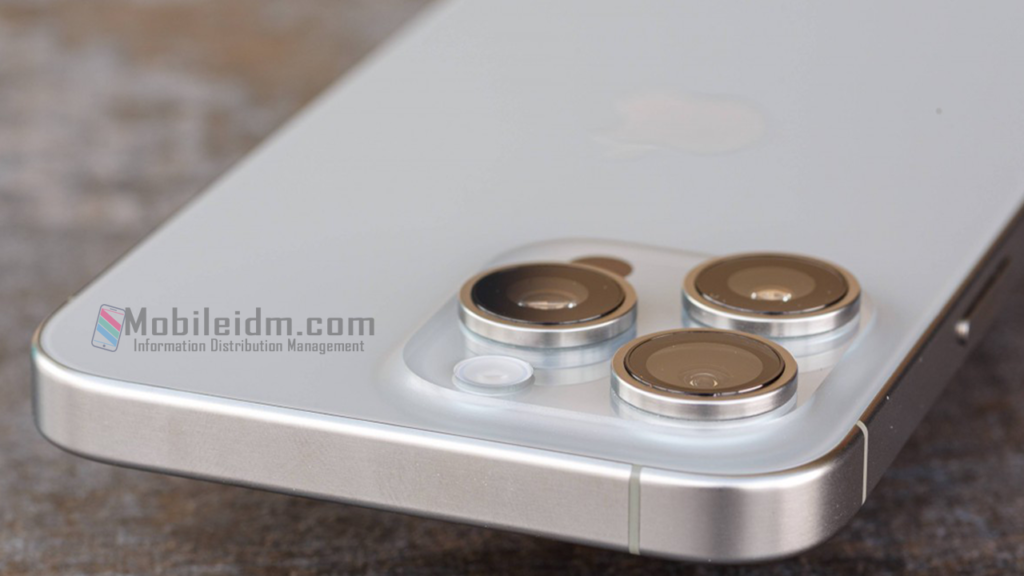
The iPhone 15 Pro Max can record video in up to 4K at 60 FPS with all of its cameras. The 4K video quality from the main camera is outstanding, with no noise, a wide dynamic range, and accurate colors. There’s abundant detail, and the processing is pretty well balanced. No matter which camera you’re shooting with, so-called cinematic video stabilization is easily class-leading.
The low-light video from the main cam is very good, with enough detail, low noise, and good exposure. The dynamic range is realistic, and the color saturation is great. Let’s move on to the five-time telephoto camera. It’s the first periscope zoom on an iPhone and a highlight of this year’s camera setup. The camera features an innovative tetrahedral prism periscope design. It also has advanced optical stabilization, where both the lens and sensor move to stabilize the image.
The five-time zoom photos are very good, with plenty of detail, low noise, and Balan sharpness. The rest of the properties are a match for what the main camera offers. great contrast, realistic dynamic range, and accurate colors in low light with auto-night mode. The zoomed photos from the telephoto cam are outstanding; they have plenty of detail and excellent sharpness. low noise, and great colors and contrast. The dynamic range is good too. Opting out of the night mode most often results in a five-time digital zoom from the main camera. 4K videos from the telephoto cam are great; the quality is a bit lower than the main cams, though, and now we move on to the ultra wide cam.
Its photos are great for this sort of camera, with a lot of detail, good dynamic range, and impressive sharpness and rendition in the corners. High-frequency details and things like foliage do come out a bit smeared-looking, though the ultrawide camera has autofocus, so you can use it to shoot closeup subjects. There’s even a dedicated macro mode, which adds some digital zoom on top of that in low light and again in night mode. Kicking in the ultrawide cam does an excellent job.
The photos are bright and detailed, with balanced sharpness. well-cleaned noise, superb color saturation, and high contrast. If you opt out of the night mode, the photos are darker, softer, and noisier with dull colors. They are still usable, but rather mediocre. The ultra-wide-camera 4K videos are impressive, with stunning sharpness around the corners, and the other properties match the main cams.
The iPhone 15 Pro Max has the same selfie camera as last year, which has autofocus. 12 megapixel selfies are superb, with lovely colors and no noise. adequate dynamic range and plenty of detail. The details maybe a bit too pronounced, though, and they may come out as unflattering, so that’s
Conclusion
The Apple iPhone 15 Pro Max It’s one of the most premium phones around, but even so, let’s consider what it brings to the table compared to the previous model. You get the lighter design with the titanium frame, the new action key, the new chipset with hardware rate tracing, and the revamped cameras, which include a nice five-time telephoto.
It’s not perfect, though there’s a question about its durability thanks to bend and drop tests online, and the combination of this chipset and iOS 17 seems to have worse thermal management than what we got on the 14 Pro Max and iOS 16. Still, these aren’t exactly deal breakers, and at the end of the day, this is the latest and greatest iPhone with solid upgrades, and it’s worth recommending.


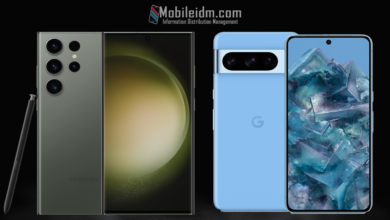
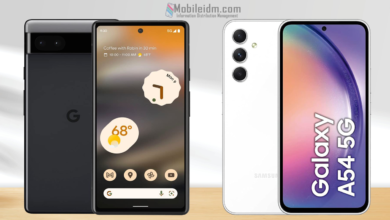
Really impressive post Thank You this article help me a lots.